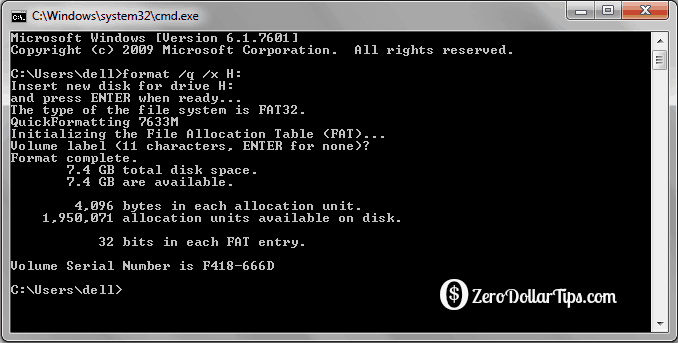Format Flash Drive Mac Command Line
Formatting a USB flash drive from the command line is actually a bit simpler in Linux than using a GUI tool. First, you need to find your flash drive. This can be done in a couple of different ways.
- To format the USB drive to FAT32, follow the next steps: Step 1. Connect the USB flash drive to your Mac computer. Step 2.Go to Applications Utilities Double click and open Disk Utility. Select your USB flash drive on the sidebar, choose Erase. Rename the USB flash drive, choose.
- The format command is a Command Prompt command used to format a specified partition on a hard drive (internal or external), floppy disk, or flash drive to a specified file system. You can also format drives without using a command.
The fdisk utility will give you a good idea of which drives are attached to your Linux system. The output of this command will look something like this:
Apurvai book pdf download. In this case, the USB flash drive is /dev/sdb. The primary partition is /dev/sdb1, with a boot flag.

Disk Utility within Mac OS X provides a range of disk management tools, from erasing and repartitioning hard disks to restoring images and repairing volumes. It's a simple way of interacting with attached storage on your Mac. Beyond this graphical front-end are some powerful command-line tools that we can use directly.
Again, with this command, the USB drive appears at the end. The flash drive is on /dev/sdb with a primary partition of /dev/sdb1, and is mounted on /mnt/myusb.
Now that you know what designation your USB flash drive has, you can format it. First, unmount the drive. Call of duty black ops english language pack.
Now, format the drive.
An easy way to remember this command is that “mkfs” stands for “make file system”. VFAT, in this case, refers to the file system type.
You can use different file system types if necessary. For example:

EXT file systems are typically used for Linux installations or files, whereas NTFS (New Technology File System) is a Windows-based file system.
You can now remount your USB drive and use it to store data or as a bootable drive.
Additional Reading
Mac Flash Drive Format
Restore the MBR to a USB Flash Drive in Linux
How to Create a Bootable Linux Flash Drive on Windows